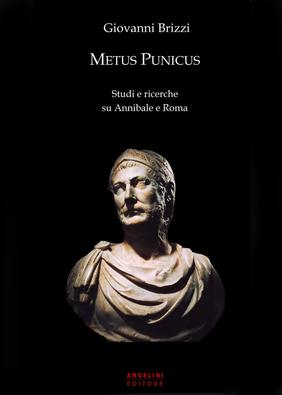|
|
 |
 |
 |
PROVA SUL CAMPO
Prova sul campo rappresenta “la voce” dei soci A.S.G.S. in merito a vecchie e nuove simulazioni che il mercato dei board-wargames offre. Una serie di pagine dove poter trovare piccole recensioni e/o resoconti di partite sui board-wargames che vengono giocati dal gruppo. Siamo sempre alla ricerca anche di collaboratori; se volete inviare articoli su giochi che amate e conoscete, contattate l’Amministratore.
Un interessante sito con recensioni: http://www.armchairgeneral.com/category/boardgame-reviews
HANNIBAL: Rome vs Carthage
Mark Simonitch
Avalon Hill

Forse il più bel Cardriven mai prodotto; di certo un must per chi ama il periodo antico.
Introduzione |
|
Da Wikipedia: La seconda guerra romano-punica fu combattuta tra Roma e Cartagine nel III secolo a.C., dal 218 a.C. al 202 a.C., prima in Europa (per sedici anni[6]) e successivamente in Africa. La guerra cominciò per iniziativa dei Cartaginesi, che volevano riscattarsi dalla sconfitta subita nella Prima guerra romano-punica e se non fu certamente la più importante per durata, lo fu per l’ampiezza delle popolazioni coinvolte, per i suoi costi economici e umani, per le decisive conseguenze sul piano storico, politico e quindi sociale dell’intero mondo mediterraneo.[7] Contrariamente alla prima guerra romano-punica, che fu combattuta e vinta essenzialmente sul mare, la seconda fu un continuo succedersi di battaglie terrestri con movimenti di masse enormi di fanterie, elefanti e cavalieri. Le marine si scontrarono ma furono quasi solamente utilizzate per aiutare gli eserciti nei loro spostamenti, o per far viaggiare i diplomatici da un regno all’altro del Mediterraneo. Anche se la condotta della guerra venne generalmente percepita per lo più seguendo il cammino di Annibale dalla Spagna al sud Italia, in realtà tutto il Mediterraneo fu direttamente e indirettamente coinvolto nella disputa fra Roma e Cartagine. Teatro di scontri terrestri furono Iberia, Gallia, Gallia cisalpina, Italia, Africa, mentre le diplomazie dei due contendenti si attivarono verso la Numidia, la Grecia, la Macedonia, la Siria, i regni dell’Anatolia, l’Egitto. Hannibal: Rome vs. Carthage è una simulazione che permette a due giocatori di simulare la seconda Guerra Punica, che vide il grande condottiero cartaginese Annibale sconfiggere a più riprese le Legioni romane fino alla sua sconfitta a Zama, perpetrata dal grande, a sua volta, Scipione l’Africano. Il giocatore Cartaginese tenta di ottenere il controllo delle varie regioni in Italia, mentre il giocatore Romano tenta di mantenere i propri domini e di eliminare lo stesso Annibale. |
Componenti (la recensione è riferita alla versione Avalon Hill, del 1996) |
|
La scatola Le dimensioni sono quelle dei “classici” giochi Avalon Hill dei primi anni ’90; l’immagine di copertina ritrae Annibale e, sullo sfondo, il suo esercito alle prese con l’attraversamento delle Alpi. Un’immagine che colpì molto all’epoca, per i colori e per lo sguardo magnetico del generale cartaginese. Sul retro, le classiche informazioni e immagini atte a “conquistare” un potenziale acquirente: mappa, pedine, carte, una breve descrizione del gioco, i suoi componenti, la scala e i n. di giocatori. Mappa Se consideriamo che il gioco venne pubblicato dalla mitica Avalon Hill nel 1996, la mappa è senza dubbio una delle migliori mai pubblicate in quegli anni e, secondo me, ancora una delle più belle fra i carddriven! In cartoncino pesante, ottimi i colori, chiarissime le tabelle, le città e le immagini raffigurate; un prodotto che fà invidia anche nel 2014 alla onorevole età di 20 anni! La mappa raffigura tutto il bacino del Mediterraneo e con Italia, Spagna e Nord Africa suddivise in zone e città/luoghi fra i principali che videro combattere la guerra.
Pedine/Counters L’edizione Avalon presenta una dotazione di truppe cartaginesi e romane in cartoncino, rotonde. Sono poi numerosi i segnalini di controllo politico delle due potenze, più vari markers utili al gioco. Molto belle e chiare. I leader sono in formato “grande” e, piazzati sulle relative basette, offrono un effetto “tridimesionale” notevole. Tutti i maggiori generali romani dell’epoca sono rappresentati così come quelli cartaginesi. I leaders hanno due valori numerici: quello strategico e quello di battaglia. Un buon leader ha un valore startegico di 1 e di combattimento fino a 4.; ogni leader possiede poi caratteristiche specifiche/storiche. Le unità militari hanno un solo valore, con un punto forza che equivale a circa 3.000 uomini. Infine sono presenti anche pedine che rappresentano tribù locali e fortificazioni.
Carte Il secondo gioco della serie “carddriven” presenta due mazzi di carte: quello con punti comando ed eventi e quello dei combattimenti. Se il primo è un “must” di ogni carddriven, il secondo era ed è ancora un pò anomalo. In effetti è stato poi abbandonato nei giochi successivi fino, perlomeno, al titolo 1989, dove riappare sotto forma più articolata. Le informazioni sulle carte sono chiarissime; oggi sarebbero state sicuramente più colorate ma devo dire che sono accettabilissime! Molto intriganti quelle per i combattimenti dove grafici specifici illustrano ogni tipo di manovra che corrisponde all’azione.
Le carte “Comando/Eventi” e quelle di combattimento
Regolamento Molto ben scritto e con ottimi esempi era una vera chicca per il 1996! La Avalon Hill stava attraversando un periodo d’oro per i regolamenti, dopo anni bui in cui venivano pubblicati giochi validi, come per esempio Russian front, ma con un libretto di regole che aveva una struttura, un’impaginazione e una grafica a dir poco brutta………….. L’autore, Mark Simonitch, ha pubblicato, diversi anni fà un regolamento aggiornato e modificato in varie parti, vedi sotto fra i links. Non possiedo l’edizione della Valley Games e quindi non sò se tali modifiche sono state implementate in tale stampa.
Dadi In dotazione, un dado D6. Segnalazioni Sul Volume 32, n. 2 (fuori produzione) della mitica rivista General, pubblicata da AH, sono apparsi numerosi articoli sul gioco e una serie di piccoli scenari da torneo molto interessanti, fra cui anche uno sulla prima guerra punica! Allego anche uno scenario che avevo progettato molti anni fà e utilizzato allo stesso modo per un torneo della nostra associazione. Il regolamento è stato aggioranto dall’autore Mark Simonitch, ed è possibile scaricarlo da qui.
|
Impressioni di giocoHannibal (Annibale, nella versione Eurogames Descarts), fù il secondo titolo, pubblicato dalla AH, della serie Card Driven Wargames. Se We the People aveva rappresentato la novità, Hannibal ha da parte sua significato la “consacrazione” del sistema di gioco nel mondo delle simulazioni storiche. Già da questo secondo titolo, il sistema di gioco subisce diverse modifiche, vuoi per esigenze di ricostruzione storica, vuoi per “evoluzione” naturale. Vengono introdotte regole sulle battaglie navali, anche se astratte; le intercettazioni sono più articolate e permesse ad entrambi i contendenti; il sistema di comando è più complesso, specie per i Romani; il numero di carte pescate varia da turno a turno; le carte stesse subiscono le modifiche maggiori, con suddivisione netta di Eventi, n° operativo, eventi possibili solo ad una fazione, ecc. I carddriven hanno come motore del sistema, le carte strategiche. Con esse, in Annibale, è possibile muovere i Generali con o senza armate o piazzare un numero di controlli politici uguali al n. sulla carta. Oppure, eseguire l’evento sulla carta. Sotto, un estratto di un’ottima recensione su BGG; ho pensato che fosse il caso di riportarla per i suoi riferimenti alle singole caratteristiche delle fazioni in gioco: Hannibal è una simulazione che ha fatto storia, nel settore baordwargame ed è ancora ottimo sotto tutti i punti di vista. Acquistatene una copia, se riuscite a trovarla, o rispolverate la vostra scatola!!!!! Super consigliato!!!! |
|
|
Links utili |
|
http://grognard.com/info/ah.html, un elenco ei vecchi e mitici giochi Avalon Hill http://theboardgaminglife.com/2011/03/16/the-art-of-card-driven-game-design-why-hannibal-rome-vs-carthage-is-the-best-cdg-ever-published/, un altra bella recensione http://www-personal.umich.edu/~gnichols/glg/Hannibal2ed.pdf, l’edizione aggiornata delle regole; consigliata! http://grognard.com/hth.aspx, in inglese, un filmato/recensione!
Segnalazioni
Sul Volume 32, n. 2 (fuori produzione) della mitica rivista General, pubblicata da AH, sono apparsi numerosi articoli sul gioco e una serie di piccoli scenari da torneo molto interessanti, fra cui anche uno sulla prima guerra punica! Allego anche uno scenario che avevo progettato molti anni fà e utilizzato allo stesso modo per un torneo della nostra associazione.
|
IL LIBRO DEL MESE
Metus Punicus
Giovanni Brizzi

|
Questo libro non è solo un’occasione per celebrare il quarantesimo anno di insegnamento di un grande antichista come Giovanni Brizzi, tra i massimi esperti mondiali di Annibale e delle Guerre Puniche, né soltanto un’interessante raccolta di studi e ricerche, ma si tratta anche e soprattutto di un avvincente itinerario storico tra Roma e Cartagine. Come un detective che esamina scrupolosamente i frammenti giunti da un lontano passato, Brizzi ricostruisce i grandi momenti dello scontro tra le due superpotenze dell’antichità, facendoci così rivivere, nel Mediterraneo del III secolo a.C., luoghi, battaglie e personaggi, sui quali “giganteggia” il più grande generale di tutti i tempi, Annibale Barca. Ordinario di Storia romana all’Università di Bologna, Giovanni Brizzi ha insegnato anche a Sassari; a Udine e a Paris IV-Sorbonne. Per i suoi meriti verso la cultura francese è stato nominato Officier nell’Ordine delle Palmes Académiques. Tra gli altri suoi riconoscimenti figura il Premio “Di Nola” per l’opera storica, conferitogli nel 1999 dall’Accademia Nazionale dei Lincei. Consigliato! |
Le guerre macedoniche
John Thornton

|
A partire dal 314 a.C, Roma affrontò a più riprese le monarchie di Macedonia e di Siria, eredi dell’impero di Alessandro Magno. In meno di un secolo, sconfitti i re macedoni Filippo V e Perseo, vinto Antioco III il Grande e umiliato suo figlio Antioco IV, il dominio diretto di Roma si estese alla Macedonia e all’Asia Minore, unificando per la prima volta le due metà del bacino mediterraneo. Il travaglio di quest’epoca tormentata portò alla nascita del mondo greco-romano, destinato a lasciare un’impronta duratura nella cultura europea; ma non fu un parto indolore. Nello scontro fra le superpotenze, gli sforzi disperati di città e stati federali del mondo ellenistico per garantirsi la sicurezza e preservare la propria autonomia risultarono spesso vani; la guerra per l’egemonia produsse ovunque conflitti civili, lutti, distruzioni e sofferenze.
|






